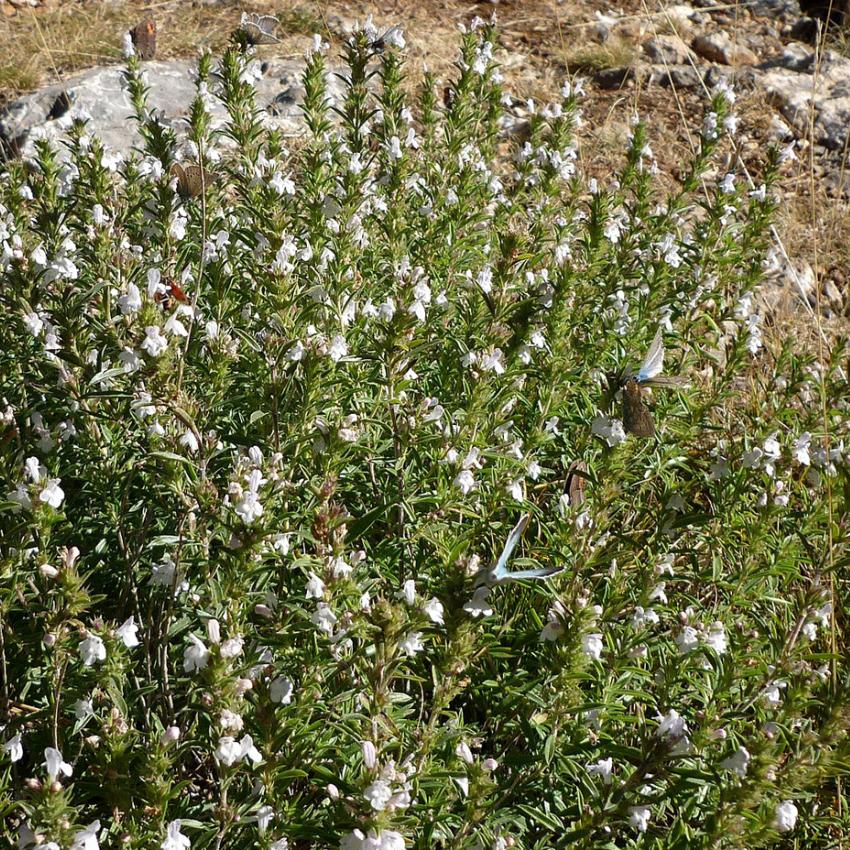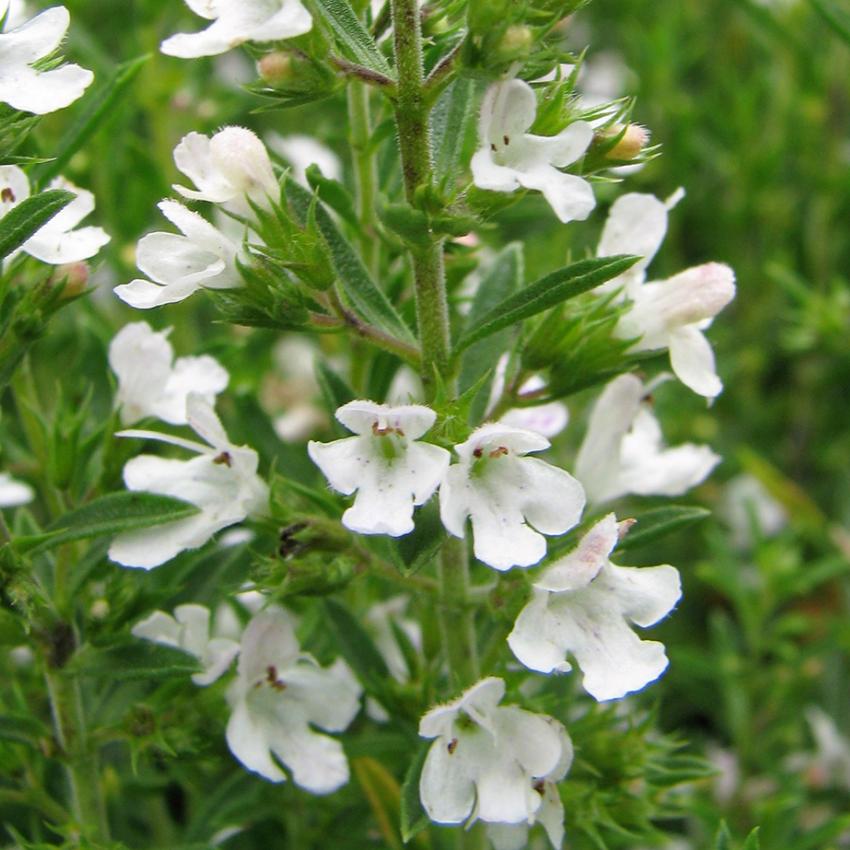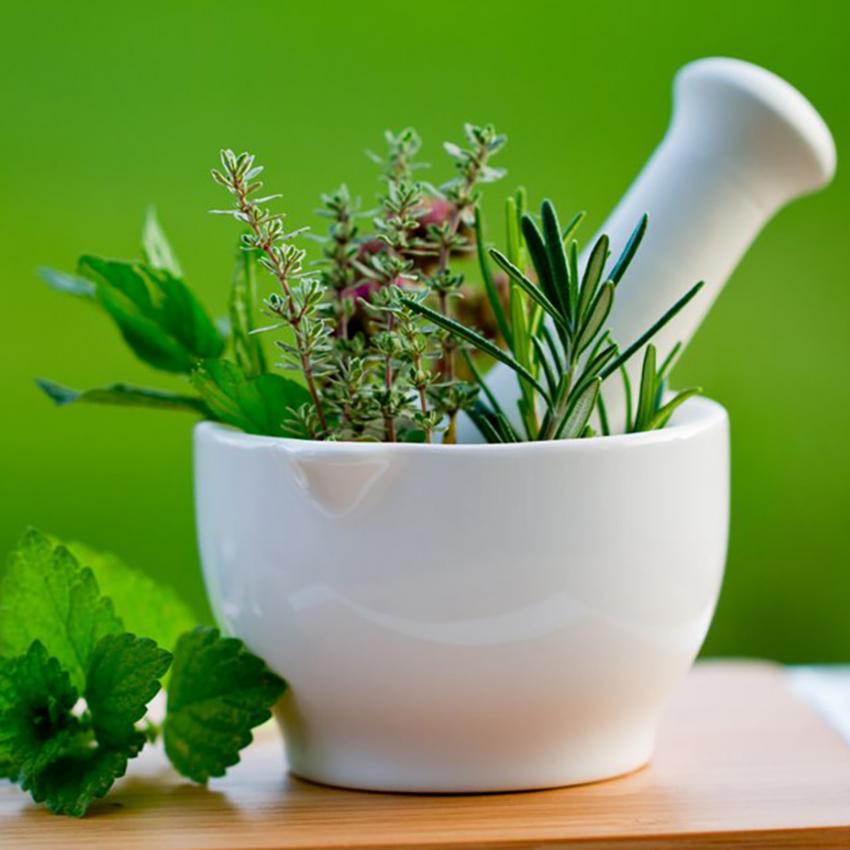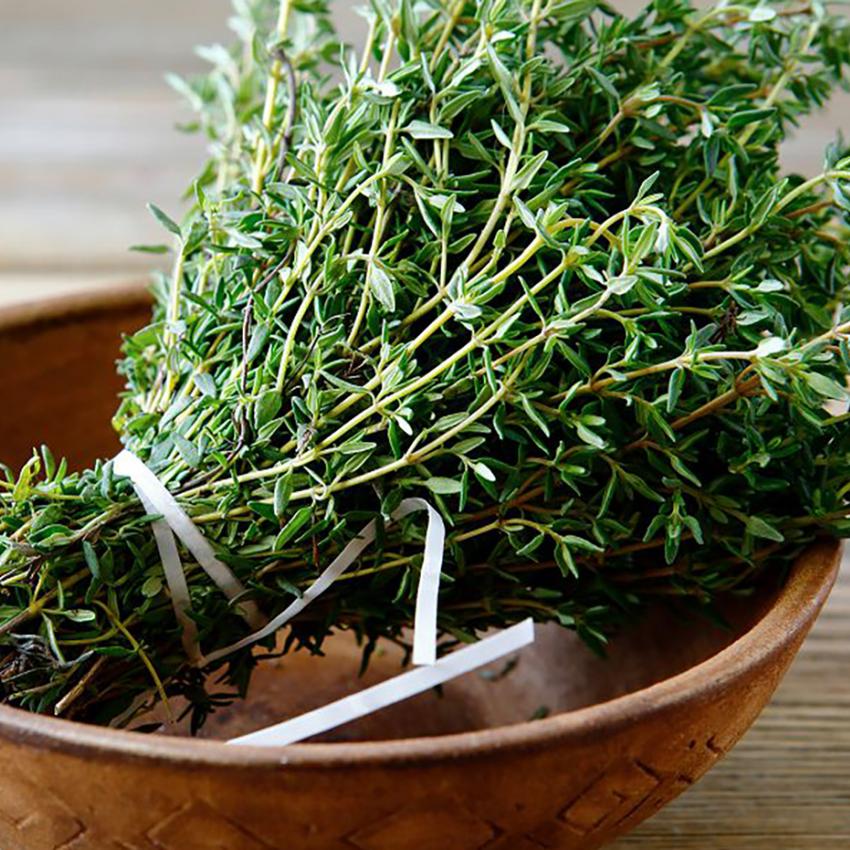



Winter savory
Satureja montana
Winter savory or mountain savory, is a perennial, semi-evergreen herb in the family Lamiaceae (mints), native to warm temperate regions of southern Europe, the Mediterranean, and Africa. It has dark green leaves and summer flowers ranging from pale lavender, or pink to white. The closely related plant, summer savory, is annual.
In cooking, winter savory has a reputation for going very well with both beans and meats, (often light meats such as chicken or turkey) and can be used in stuffing. It can also be used in soups and sauces. It has a strong flavour while uncooked but loses much of its flavour under prolonged cooking. It can be added to breadcrumbs, as a coating to various meats including trout.
Winter savory can have antiseptic and digestive benefits. It has been used in the treatment of bee stings and insect bites, by the use of a poultice of the leaves. Winter savory has a stronger action than summer savory. Taken internally, it is said to be a remedy for colic and flatulence. It is also used to treat gastro-enteritis, cystitis, nausea, diarrhoea, bronchial congestion, sore throat and menstrual disorders.The plant is harvested in the summer when in flower and can be used fresh or dried. The essential oil forms an ingredient in lotions for the scalp in cases of incipient baldness. An ointment made from the plant is used externally to relieve arthritic joints.
In traditional herbal medicine, summer savory was believed to be an aphrodisiac, while winter savory was believed to inhibit sexual desire (an anaphrodisiac). French herbalist Maurice Messegue claimed that savory was 'the herb of happiness'.

Find the plant...
